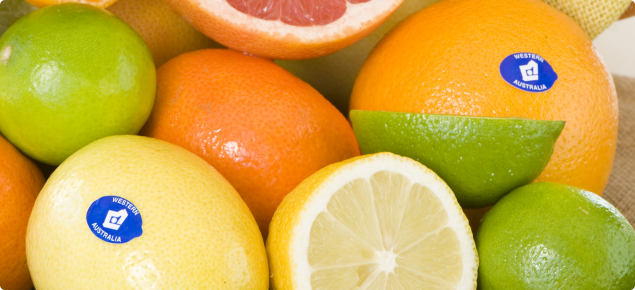Chewing insects
Citrus leafminer
Citrus leafminer (Phyllocnistis citrella) is the larva of a small moth originating from south-east Asia and is commonly seen in backyard citrus trees. The larva infests young foliage in early autumn, peaking in April or May and feeds within the leaves creating distinctive silvery tunnels or 'mines'.
They can cause severe damage to the leaves of trees less than three years old. Established trees are less affected. Damage is usually worst when there is new flushing growth in early autumn, depending on temperature.
Citrus leafminers are naturally controlled by small parasitic wasps. Damaged leaves can be pruned out but if chemical control is required spray new foliage with horticultural oil from summer to autumn.
Lightbrown apple moth
Lightbrown apple moth (Epiphyas postvittana) caterpillars are a native species occurring from spring to autumn and are up to 20mm long. They can be found in protected areas where fruit, or fruit and leaves touch, or in the navel of some navel orange varieties. The caterpillars produce a protective web under which they feed.
Lightbrown apple moths are naturally controlled by wasps like Trichogramma which parasitise the eggs, while caterpillars are parasited by braconid wasps. Oechalia schellembergii bugs will also predate on the adult moth.
For chemical control, a mixture of garlic, chilli and pyrethrins is commercially available as a low toxicity pesticide.

